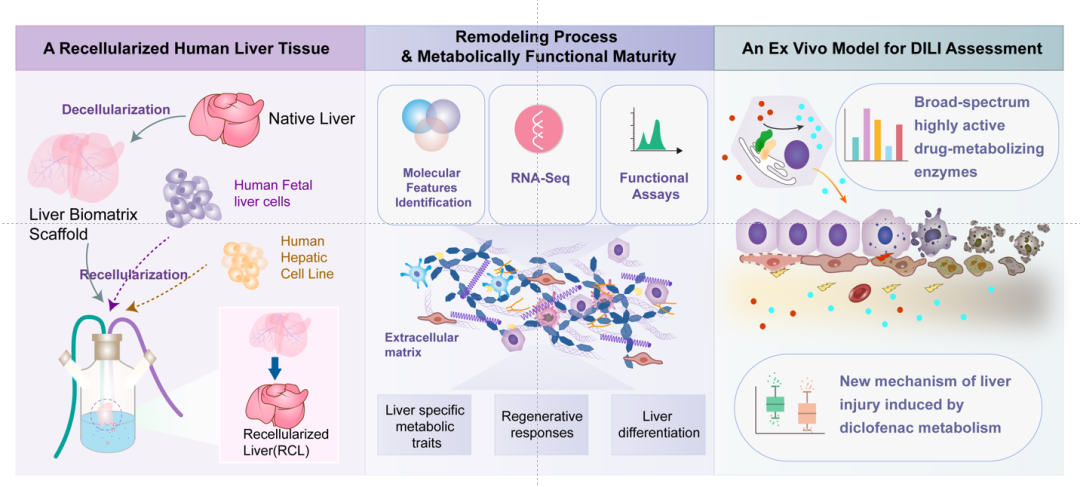
(Written By LIU. J. Translated By GU.X.Y.)As the largest metabolic organ in the human body, the liver plays a crucial role in drug metabolism, protein synthesis and detoxification. However, traditional ex vivo liver models (e.g. hepatocyte monolayer cultures and animal models) have significant limitations in mimicking complex functions of the human liver, which makes it difficult to meet the demand for modern drug development and metabolic research.
Recently, in response to this challenge, Prof. Wang Yunfang's team at the Hepato-Pancreato-Biliary (HPB) Center of Beijing Tsinghua Changgung Hospital, has published new research results, which innovatively constructed a functional tissue-engineered human liver model, opening up a new direction for ex vivo drug metabolism research, with the following three main research highlights:
1. Biomimetic Design
By integrating decellularization technology, biomaterial science, and tissue engineering techniques, the research team constructed liver-like tissues with multi-layered microstructures, achieving efficient simulation of the human liver microenvironment. This innovative decellularised liver scaffold not only preserves the extracellular matrix (ECM) structure of the original liver, but also retains the bioactive molecules that bind to the ECM, providing a suitable environment for the growth and differentiation of hepatocytes.
2. Function Optimization
The model not only preserves the drug metabolism and detoxification functions of hepatocytes, but also exhibits activity in protein synthesis and enzymatic reactions similar to those of the human liver in vivo. This characteristicmakes the model highly reliable in assessing drug safety and efficacy, providing a powerful tool for new drug development and personalized medicine.
3. Research Applications
Drug metabolism experiments based on this model showed its remarkable ability to simulate liver toxicity and drug metabolism functions in vivo, especially in exploring the mechanisms of drug-induced liver injury (DILI). In addition, the model showed high drug-metabolizing enzyme activities , providing a promising avenue for studying DILI and contributing to a more detailed understanding of early drug discovery processes.
This study provides a novel paradigm of high-simulation liver models in the biomedical field, demonstrating the potential of tissue engineering technology in drug discovery, toxicological evaluation, and basic medical research. In the future, the team will further optimize the function of the model and explore its potential application in the study of liver disease mechanism and regenerative medicine.
The research result was published as a cover article in Bioactive Materials under the title of “Decellularized liver scaffolds for constructing drug-metabolically functional ex vivo human liver models”. Wang Yunfang is the corresponding author. Liu Juan from HPB Center of Beijing Tsinghua Changgung Hospital is the first author. Prof. Lola M. Reid's team at the University of North Carolina at Chapel Hill also provided substantial support to this study. This study was funded by National Key Research and Development Program of China, the Major Research Plan of the National Natural Science Foundation of China and other projects.
Paper Link:
https://doi.org/10.1016/j.bioactmat.2024.09.029
